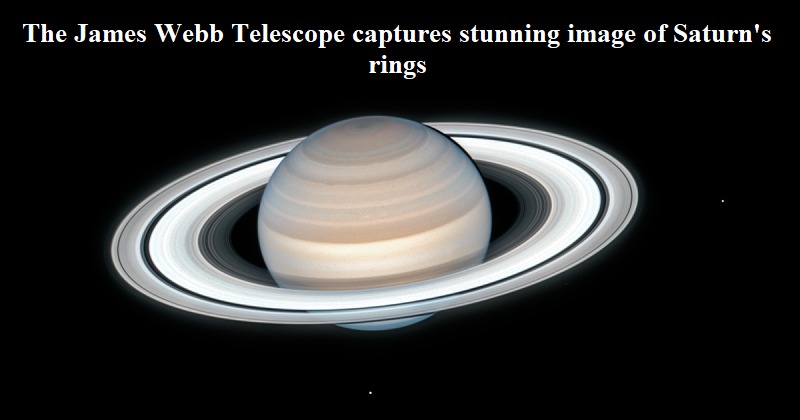
The James Webb Telescope has captured a breathtaking image of Saturn’s rings, as reported in a blog post by NASA on June 30. The image was taken on June 25 and revealed fascinating details about Saturn and its surrounding environment.
According to the blog, Saturn appears extremely dark in the infrared wavelength observed by the telescope due to the absorption of sunlight by methane gas in its atmosphere. However, the icy rings remain relatively bright, resulting in the unusual appearance of Saturn in the Webb image.
The image was part of the Webb Guaranteed Time Observation program 1247, which involved deep exposures of Saturn to test the telescope’s ability to detect faint moons and study the planet’s rings.
NASA’s blog post highlighted that the image captured details within Saturn’s ring system, including the moons Dione, Enceladus, and Tethys. Further deeper exposures will allow scientists to investigate the fainter rings of Saturn, such as the G ring and the E ring.
The space agency described Saturn’s ring system as mostly broad, with narrow gaps between them. There is an innermost, thicker ring followed by a brighter, wider ring. Moving outward, there is a small dark gap before another thicker ring, within which a narrow faint band can be observed. Finally, there is an outermost, faintest, and thinnest ring.
Interestingly, the image also revealed surprising and unexpected details about Saturn’s atmosphere. While the Cassini spacecraft provided greater clarity in observing the atmosphere, this is the first time such clarity has been achieved at the specific wavelength (3.23 microns) unique to the Webb telescope.
The image showed large, dark, diffuse structures in Saturn’s northern hemisphere that do not align with the planet’s lines of latitude, deviating from the familiar striped appearance typically seen in Saturn’s deeper atmospheric layers.

Post Your Comments